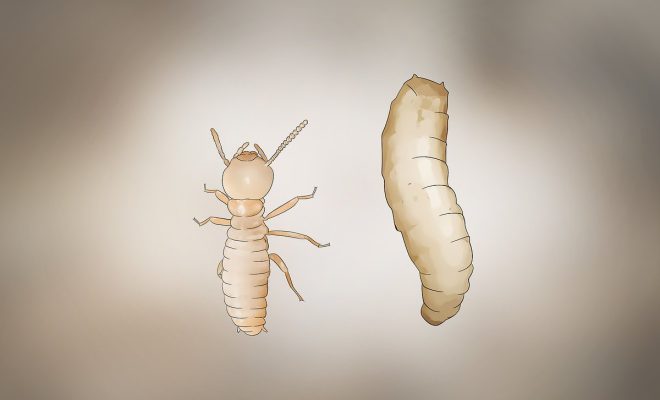3 Ways to Identify Termite Larvae

Termites are undoubtedly among the most destructive pests that can invade your home. They cause billions of dollars in damages every year. One of the most critical steps in preventing damage from termites is early detection. By identifying termite larvae, you can take necessary actions to get rid of the infestation before it grows into a more significant problem.
In this article, we will discuss three ways to identify termite larvae and begin the process of exterminating these destructive pests.
1. Physical Appearance
Termite larvae are distinguishable by their physical appearance. They are typically around 1/8-inch in length and have a milky-white or slightly transparent color. They closely resemble worker termites and may easily be confused with them, but there are a few differences to help distinguish them. Larvae have slightly larger and rounder heads than worker termites, and their bodies are segmented with a more rubbery texture.
2. Location
The location where you find these tiny creatures will give you useful information for identifying termite larvae. Termites prefer dark, damp places, so they often infest areas around your home like woodpiles, yard debris, or rotten wood structures. When inspecting these potential habitats, keep an eye out for termite larvae amid other insects and debris.
Additionally, termites build mud tubes on walls or foundations to move safely from their nests to food sources. If you spot mud tubes on your property or within your home’s crawl spaces, there is a high likelihood that termite larvae may also be present nearby.
3. Behavior
Termites have unique behaviors that can help you identify their presence in your home or around your property. Termite larvae are primarily looked after by older worker termites in the colony. While it might not be easy to differentiate between worker termites and larval termites at first glance, observing their behavior can give important clues. Termite larvae are comparatively less mobile than worker termites, and they may be found wriggling or moving slowly, staying close to the colony to feed on materials collected by the workers.
If you find termite larvae in or around your home, it is crucial to take immediate action to control and eliminate the infestation. Early detection and effective pest control measures can save your property from severe structural damage caused by these invasive creatures.
We recommend consulting with a professional exterminator who is experienced in termite management to ensure a safe and effective solution.

